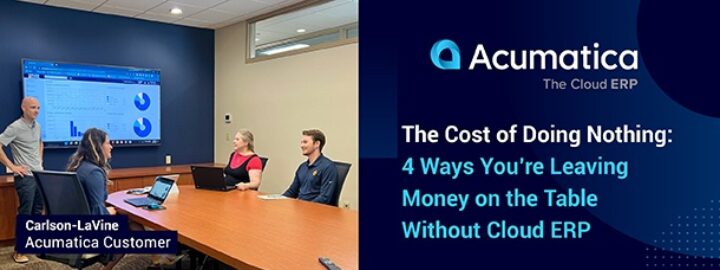
What is Opportunity Cost?
Opportunity cost is a term that is often misunderstood but is vitally important to all businesses, and it can be simply defined. When businesses are faced with multiple opportunities, they usually have to choose one and forgo the others.
Opportunity cost is the potential benefits and profits the forgone options would have provided. It’s what choosing one opportunity costs you.
Understanding opportunity cost and being able to weigh decisions appropriately help businesses optimize resources, minimize risk, and make informed decisions that drive growth and profitability.
What Is a Business Opportunity?
A business opportunity is anything (e.g., a product, service, task, financial investment, etc.) to which you devote time, energy, and money expecting to receive a return on investment (ROI). This ROI could come in the form of increased efficiency, enhanced profitability, or both.
But not every business opportunity is beneficial. That’s why strategic risk analysis and vetting opportunities based on your production capabilities and financial resources are crucial steps.
How to Calculate Opportunity Cost
Now, let’s look at an example of opportunity cost (or cost per opportunity). Assume you have two prime business opportunities that pass the production, financial, and risk smell tests. Even though both look good on paper, you can only choose one. How do you calculate the opportunity cost of choosing one over the other?
Here’s the Opportunity Cost Formula:
(Return of Alternative Option) – (Return of Chosen Option) = Opportunity Cost
Let’s say that each business opportunity will cost the same; but option A will generate $100,000 in additional revenue, and option B will generate $75,000. To find your opportunity cost, plug this information into the Opportunity Cost Formula.
($100,000) – ($75,000) = $25,000
Option A delivers the highest net benefit, so choosing option B will result in an opportunity cost of $25,000.
Implicit vs. Explicit Costs in Business
Determining the ROI or additional revenue generated by each business opportunity requires understanding your implicit and explicit costs.
Implicit costs are intangible, not measured for accounting purposes, and do not cost money. Examples include time spent on training employees instead of producing goods or donating your personal time and labor for your start-up business.
Explicit costs are tangible, measured for accounting purposes, and involve the exchange of money or resources. Examples include rent, utilities, salaries, equipment, supplies, etc.
Together, these costs can be used to measure the ROI of a course of action and then applied to the Opportunity Cost Formula.
How Opportunity Cost Drives Strategic Business Decisions and Growth
The goal of every business is to grow. Growth can be organic (e.g., designing/selling new products, increasing efficiency, investing in new technologies), inorganic (e.g., via corporate mergers, acquisitions, and takeovers), or a combination of both.
To ensure that you’re making strategic business decisions that will encourage growth, you’ll need to compare the short- and long-term consequences of your options. By doing so, you’ll see which one offers immediate or long-term benefits. Should your options provide both, then opportunity cost will help you determine which option’s benefits will best sustain and grow your business in the future.
Ultimately, strategic business decisions are based on facts, and opportunity cost delivers those facts.
The Role of ERP Systems in Opportunity Cost
To recap, opportunity cost is an essential method for weighing the pros and cons of the many financial and operational decisions you’ll make when growing your business. It’s not a line item in your accounting, nor are the inputs definitive, but it does provide a clear indicator of what you will gain or lose when choosing one option over another.
Often, the best way to understand a concept like opportunity cost is to see it in action.
Saddleback Leather makes and sells high-quality leather goods. When founder and CEO Dave Munson started the company, he and his team used a custom-made financial system, which was eventually replaced by Oracle NetSuite.
Unfortunately, NetSuite did not live up to their expectations.
“Nothing worked fresh out of the box. It took 14 developers just to make it work. It was proprietary, so anything you wanted changed took 10 times longer than necessary to implement,” Munson explains.
There were other challenges, including the Saddleback team’s inability to seamlessly connect NetSuite to Magento, Saddleback’s online storefront solution. Even so, Munson’s IT developer advised him to stay with NetSuite, saying it would get better. But according to Munson, “it was always a downgrade with NetSuite.
If Saddleback had stayed with NetSuite, they would have continued to spend $230,000 a year plus millions more to keep it running with a large development staff. They were also losing millions due to ongoing online traffic issues that NetSuite couldn’t resolve.
By choosing Acumatica—with its open platform, ease of use, consumption-based pricing, mobility, seamless integrations, and inventory management capabilities—Saddleback reduced their IT development team from 14 to 2, saved $750,000 per year, increased functionality by 10x, saw a 45% growth in organic traffic, and more.
The opportunity cost of choosing NetSuite over Acumatica would have been staggering. Acumatica was the correct decision for Saddleback, and now they have a solution that will help them continue to make wise business decisions for growth far into the future.
“I had a million ideas, but all of them were impossible with Oracle NetSuite,” says Munson. “Now, I sleep, dream and hope—three things I was not able to do with NetSuite. Our culture and atmosphere are so much more positive, and people are in a good mood. Everything is coming together, and our company is growing at a fast rate. It’s fantastic.”
 Canada (English)
Canada (English)
 Colombia
Colombia
 Caribbean and Puerto Rico
Caribbean and Puerto Rico
 Ecuador
Ecuador
 India
India
 Indonesia
Indonesia
 Ireland
Ireland
 Malaysia
Malaysia
 Mexico
Mexico
 Panama
Panama
 Peru
Peru
 Philippines
Philippines
 Singapore
Singapore
 South Africa
South Africa
 Sri Lanka
Sri Lanka
 Thailand
Thailand
 United Kingdom
United Kingdom
 United States
United States










